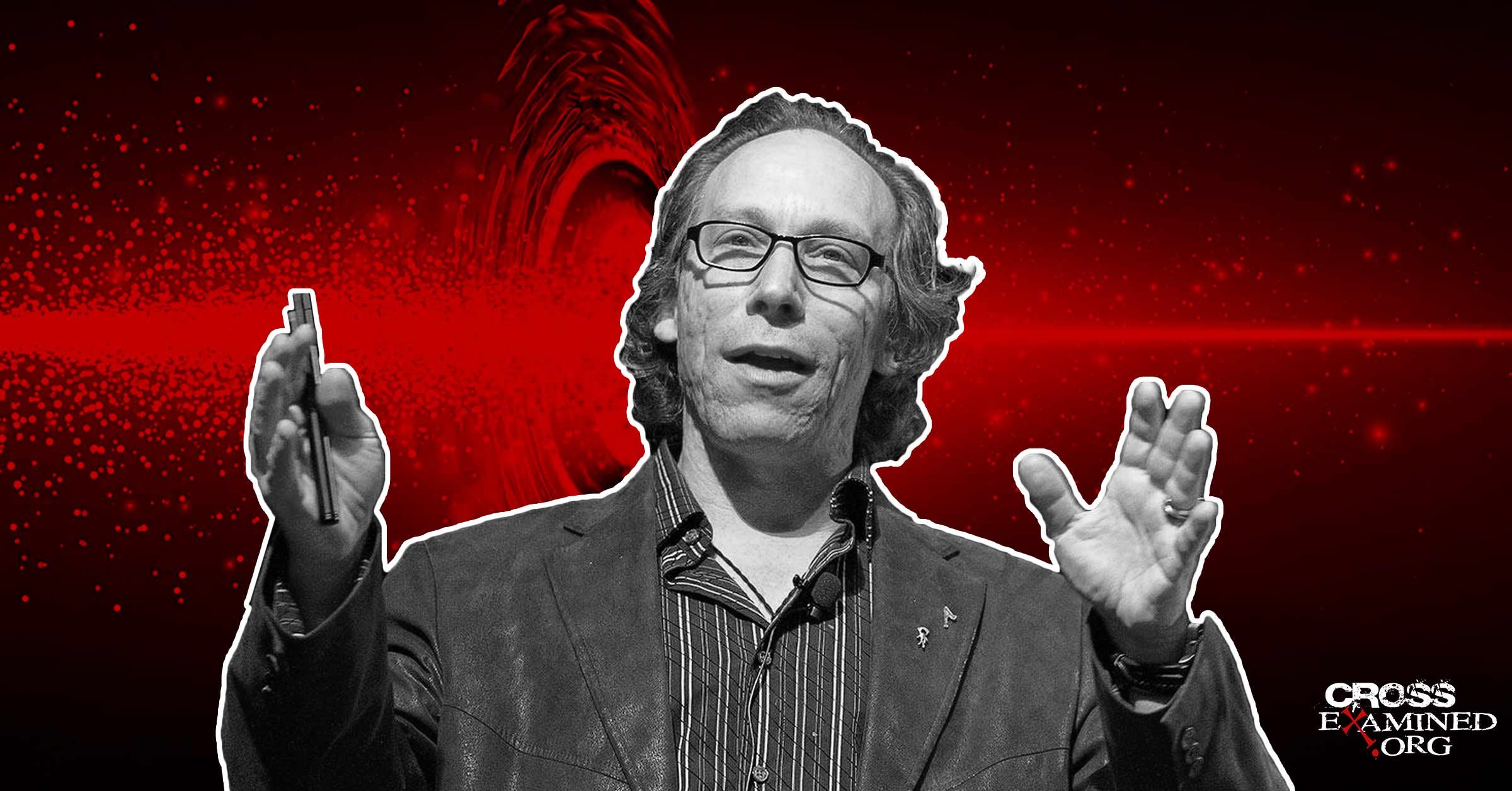The purpose of this post is not to prove that Intelligent Design is true, nor that it is superior to naturalistic alternatives, but simply to raise awareness over some of the lines of evidence where Intelligent Design seems to be science. Let me also reject in advance those who dismiss ID with casual comments like, “There is no evidence whatsoever for ID,” “ID is creationism in a tuxedo, but still has no ticket for the party,” or “ID is no more scientific than astrology” or the like. These aren’t necessarily ridiculous positions to hold, but they require a lot more substance than most claimants (that I’ve encountered) are usually willing to muster. ID does not necessarily deserve credit or acceptance, but if satisfies the criteria for admission into scientific consideration, then one cannot in good-intellectual-honesty dismiss it out of hand and still claim to be science-minded.
First, ID employs a theory drawn from science, namely, information theory (see, Dembski’s The Design Inference)–information theory is a staple in SETI, Forensics, Archeology, Cryptology, Anthropology, etc.
Second, the problem with ID is not whether information theory is scientific, but whether astronomy, biology, and chemistry are valid fields of applying information theory. Properly casting the nature of this debate is key to understanding the lines of argumentation. Those rebuking ID for elaborating “information theory” should instead focus their argument on the illegitimacy of applying information theory to fields like astronomy, biology, and chemistry.
Third, ID does achieve claims that are, at least on a low level, falsifiable. For example, the Bacterial flagellum may be irreducibly complex if no more basic alternative-use formulations such as a (Type III secretory system [syringe type rod]) can be found which are constitutionally older than the flagellum. Applying ID theory to the flagellum renders a testable prediction, namely the falsifiable theory that if the flagellum is irreducibly complex, then there will never be discovered a simpler same-function form nor an older alternative-function form.
Fourth, neither naturalism nor materialism has been, historically, a necessary precondition for doing science, given the preponderance of religious scientists throughout history. It may be argued, weakly, that if one allows for supernatural causes, one is discouraged or distracted from the hard task of finding natural, reliable, or material causes for natural phenomenon. While that possibility makes sense, it has not been the reality. Despite there being many non-theists (i.e.: no kind of God-belief) in the sciences, there are still a host of theists who have little trouble employing a methodological naturalism for much of their work while suspending that assumption where it might bias the data (such as, dismissing evidence for a miracle claim simply because naturalism demands dismissing all miracle claims). Stephen Jay Gould’s Non-overlapping Magisterium is a nice theory to safely quarantine religion and science from effecting each other, but both make metaphysical claims on history, humanity, and the natural world. And many scientists exist in the overlap for, despite the claims of casual anti-ID theorist, these science-minded theists can readily admit the possibility of an active God without descending into a “magical” irrational view of nature.
Fifth, ID does bear fruit in further predictions and study. We can, for example, study and apply irreducible complexity theory anywhere in biology to see where it fits and where it does not. At a minimum, such applications of ID force evolutionary alternatives to mount a more comprehensive/compelling set of unintelligent mechanisms since the known unintelligent mechanisms fail pretty badly on many cases. Pure evolutionary theory, for example, has the difficulty of explaining the reality of “true belief” given the non-intelligent mechanical causes of Newtonian forces as it’s only physical forces, or, natural selection and genetic variations as it’s overriding biological forces. Sure one can appeal to conceptual models and thought experiments to argue for an evolutionary answer to this problem Plantinga calls “the Evolutionary Argument Against naturalism,” but that effort is bound to circularity, begging the question, since naturalistic answers ostensibly presuppose that intelligence arises from non-intelligence though that is precisely the premise needing defense.
For another example, ID predicts that the more irreducibly complex and higher specified complexity of something, the less capable we will be at demonstrating a viable evolutionary account. By testing evolutionary mechanisms against a given object–such as the Giraffe’s neck or the woodpecker’s tongue–we can see, according to the prediction, whether the known mechanisms of evolution easily explain it or not. If the Giraffe’s neck, which supposedly is irreducibly complex, then there would be no immediate and demonstrable explanation from naturalism for its appearance. If the Giraffe’s neck is slightly or greatly complex, and irreducible in either case, then evolutionary theory will have an easier or harder time, respectively, providing a viable account from natural causes that does not betray the kind of incrementalism espoused by Darwin nor, if one is okay with being in the scientific minority, the punctuated equilibrium espoused later. Remember though, that both sets of theories have their own burden of proof whereby they ought to exceed the (low) test of “explanatory” sufficiency and reach some kind of testability.
Still a third example of how ID is fruitful with testable predictions, ID predicts that high-information content within organisms can devolve, but does not greatly evolve. Hence, we can subject microorganisms to generations of forced mutations to see if any give rise to sustainable gains in specified complexity. Fourth, ID presents tremendous applications for the search for extra-terrestrials (i.e., non-human intelligences), and reapplication of information theory in forensics, cryptology, computer programming, Artificial Intelligence, and archeology. Fifth, and implied above, ID also presents a valuable frame of reference for critiquing the monopoly of evolutionary theory (such that many evolutionists are not aware of any explanatory gaps or weaknesses within evolutionary theory). And what is science if not a free-exchange of alternative theories and findings achieving the market-capitalism of ideas whereby poorly framed hypotheses can be honed and improved, or ground down into oblivion.
Sixth, it is not very scientific to put faith in evolutionary theory to IN THE FUTURE resolve present ignorance. Evolution-of-the-gaps is no less dogmatic and faith-based than is God of the gaps. And frankly, a great deal of force behind the rejection of ID is fueled by faith in evolutionary theory to explain aspects of nature that are yet unknown. Though evolution, according to typical evolutionists, has been well verified on many accounts, scientists pride themselves on respecting no authorities and refraining from all faith or dogma in place of their science. Where evolution has not been DEMONSTRATED to explain a certain phenomenon, it remains a theory, or, at best a hypothesis. But any use of said hypothesis prior to experimentation risks being philosophy or even theology. Scientists are more than allowed to do philosophy; they just have to sacrifice the authority and credibility of “Science-says-so-and-so” when they are philosophizing.
Seventh, NO scientific claim is DEDUCTIVELY verifiable–as that would entail the kind of certainty achieved only in logic and math. It would not be fair to demand of Intelligent Design a degree of certainty that the rest of science rarely if ever achieves. All scientific claims, even the strongest ones, are limited to INDUCTIVE probability never deductive certainty since they are fundamentally empirical (not rationalistic or formalistic in their metaphysics or epistemology).
Eighth, any theoretical streams within science are deemed “scientific” though they conceptually and practically defy testability (whether verification or falsification)–just as Theoretical Physics like String Theory.
Ninth, whatever else “science” means, there would seem to be something inherently unscientific about disqualifying what may be true and treat any related questions as uninteresting since they are not bound by naturalism. Science should not be too proud to investigate the mating habits of insects nor the possibility of non-human intelligence.
Tenth, science itself could not exist without philosophy of science to establish it’s nature and parameters. Truth be told, ID tests the demarcation problem for Science though many scientists themselves may have never known there was any problem demarcating Natural Science from other fields of study like theology or philosophy. Scientists hate to admit this, as there is a generally negative view of metaphysics entire even though every scientist is, by the nature of the field, a part-time metaphysician. To illustrate, it was the philosophy of science that gave birth to the scientific method which gave modern birth science. This point is relevant because the natural sciences rightly incorporate under the title of “science” things that were never purely “science. The scientific method was not hatched in a lab but in the mind of philosophical-theological-scientists. We would sacrifice too much if we cut off any “philosophy” or “theology” as non-science simply because it is not testable in a lab as that would forbid the scientific method itself–which is philosophy, and not itself testable within the parameters of science.
Eleventh, it is a genetic fallacy and a fallacy of association to fault ID for having young-Earthers, religious people (who are presumed “biased”), or otherwise unliked characters among its members. We should remember that early chemists are largely indistinguishable from alchemists–yet we would not want to dismiss their work as “unscientific” just because they were still dabbling in pseudoscience. We would not want to morally fault science for its association among Nazi experimenters in WWII. Abuse does not bar use. And if the ID is abused or genetically tainted by some of its practitioners, we still have the theory itself to deal with lest we mistakenly burn the message because of the messenger. Conversely, we cannot rightly fault the findings of atheistic humanists in science because they, perhaps, have an anti-theological bias or might be “swayed” by their irreligion or humanism or atheism. Biased people can still do good science provided; there’s is not an overriding bias.
In conclusion, a compelling case can be made that ID is indeed a science and therefore, it deserves a hearing among science-minded people.
 During a radio debate I had with an atheist recently, I pointed out that the universe had a beginning and thus needs a cause. He responded by claiming that since there was no space or time prior to the creation event we shouldn’t appeal to the law of causality to claim that the creation event was caused.
During a radio debate I had with an atheist recently, I pointed out that the universe had a beginning and thus needs a cause. He responded by claiming that since there was no space or time prior to the creation event we shouldn’t appeal to the law of causality to claim that the creation event was caused.



